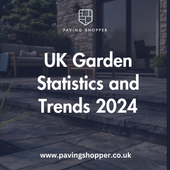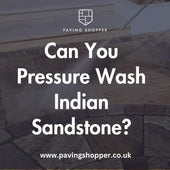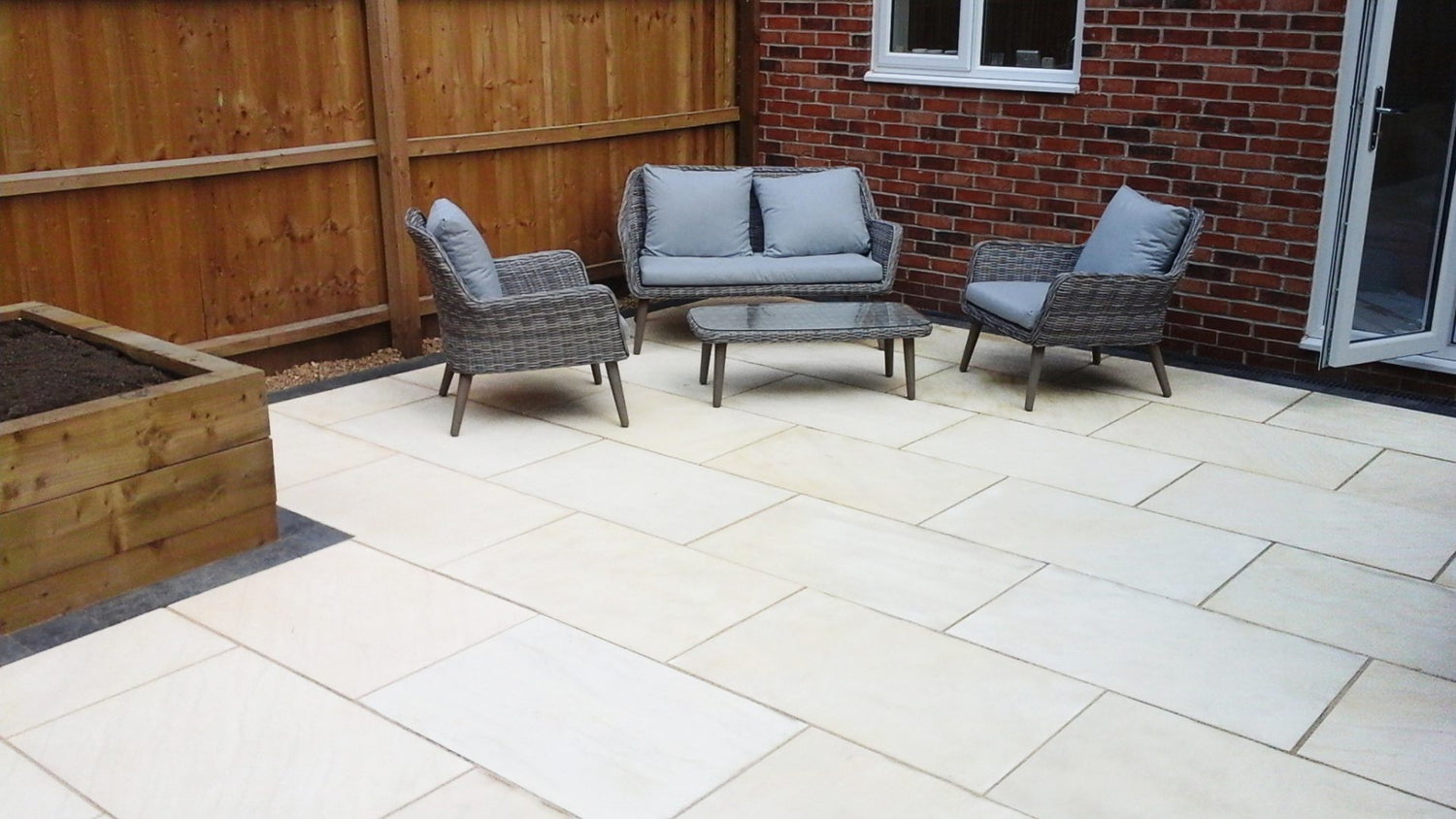
What Different Sizes Do Paving Slabs Come In?
Share
When planning a patio or outdoor paving project, one of the key decisions is choosing the right size paving slabs. The size of the slabs impacts the overall look and feel of the space, as well as the ease of installation and cost. In this comprehensive guide, we'll explore the most common and popular paving slab sizes available in the UK market.
Paving slabs are available in various sizes, including rectangular, square, and circular shapes. The most popular options are the 60 series and single size paving using 600x600mm or 900x600mm slabs. Slabs are typically 18-25mm thick and can be mixed within a project for unique patterns.
Rectangular Paving Slabs
Rectangular paving slabs, such as the 600mm x 300mm and 900 x 600 mm sizes, offer a versatile option for various paving projects. The elongated shape allows for the creation of linear patterns, such as stacked bond or stretcher bond, which can visually lengthen and widen a space. Rectangular slabs are well-suited for pathways, as they provide a natural walking rhythm and can be laid in a directional pattern to guide foot traffic.
Square Paving Slabs
Square paving slabs, like the popular 600 x 600 mm size, bring a sense of symmetry and balance to outdoor spaces. They can be laid in a simple grid pattern for a clean, modern look or arranged in a diamond formation for added visual interest. Square slabs work well in both small and large areas, and their equal proportions make them easy to work with and combine with other shapes and sizes.
Circular Paving Features
While not as common as rectangular or square paving slabs, circular paving features can add a unique and eye-catching element to your outdoor space. Circular paving can be used to create a focal point, such as a small patio area or a centerpiece in a larger paved expanse. The curved edges of circular paving can soften the hard lines of traditional paving slabs and introduce a sense of flow and movement. Circular paving can also be used to highlight specific areas, such as a fire pit or water feature.
The 60 Series: The Most Popular Choice
The 60 series is the most widely used and recommended size for paving slabs. It consists of four sizes that share a common multiple of 300mm:
-
- 900 x 600 mm
- 600 x 600 mm
- 600 x 450 mm
- 600 x 300 mm
The consistent sizing and easy-to-work-with common multiple make the 60 series a top choice for both DIY enthusiasts and professional landscapers. The slabs can be laid in various patterns, from simple stacked bonds to more intricate designs.
The 56 Series: An Alternative Option Another popular sizing option is the 56 series, which includes five slab sizes:
-
- 840mm x 560mm
- 560mm x 560mm
- 560mm x 420mm
- 560mm x 280mm
- 280mm x 280mm
While not as widely used as the 60 series, the 56 series offers a bit more variety in sizes. However, the common multiple of 560mm can be slightly trickier to work with compared to the 60 series' 300mm.
Single Size Paving Slabs
In recent years, there has been a growing trend towards using single size paving slabs for a clean, modern look. The most popular single sizes are:
-
- 600mm x 600mm
- 900mm x 600mm
Opting for a single size creates a uniform, grid-like pattern with long, straight lines that complement contemporary design styles.
Choosing the Right Size for Your Project When selecting paving slab sizes, consider the following factors
-
- Space: Larger slabs can make a small area feel more spacious, while smaller slabs are better suited for larger areas or creating intricate patterns.
- Style: The size of the slabs contributes to the overall aesthetic. Large, single-size slabs create a modern, minimalist look, while multiple sizes can achieve a more traditional or rustic feel.
- Installation: Larger slabs cover more area per piece, requiring less labor for installation. However, they can be heavier and more challenging to handle.
- Budget: Generally, larger slabs are more expensive per square meter compared to smaller sizes. However, they may result in lower installation costs due to fewer pieces needed.
What is the thickness of paving slabs?
Paving slabs for residential projects range from 18mm to 25mm thick. The thickness is typically consistent across all sizes within a particular series or product line.
Can I mix different sizes of paving slabs in the same project?
Mixing different paving slab sizes within the same project is possible and often encouraged. Combining sizes can create visual interest and unique patterns. Many "patio packs" include a mix of slab sizes specifically designed to be laid together.
How do I calculate the number of paving slabs needed for my project?
To calculate the number of paving slabs needed, first determine the total area to be paved in square meters. Then, divide this area by the area of a single slab (length x width) in square meters. Always round up to the nearest whole number and add 5-10% for cuts and waste.
Related Posts
-

UK Garden Statistics and Trends 2024
UK Garden Statistics and Trends 2024 General UK Garden Statistics The vast majority of UK households have access to ...
-

Can I lay Paving on Soil or Mud?
Technically, yes – you can lay paving stones or slabs directly onto exposed topsoil however, laying a sub-base will e...
-

How Much Does a New Patio Cost?
A new patio in the UK typically costs between £80-£150 per square meter. For a 40-50 sqm patio, expect to pay £2,000-...
-

Can You Pressure Wash Indian Sandstone?
Indian sandstone is a popular choice for outdoor paving due to its durability and attractive appearance. However, li...
-

Is Sandstone Paving Permeable? Is it porous?
Sandstone's porous nature enables it to absorb rainfall, qualifying it as a permeable paving variety. However, seali...
-

Where Does Natural Sandstone Paving Come From?
Sandstone begins deep underground, formed over eras as minerals and sediments fused under pressure. Powerful forces ...
-

5 Paving Ideas for Small Gardens: Maximise Your Outdoor Space
Front of House When considering paving ideas for the front of your house, it's crucial to select ones that complem...
-

9 Paving Ideas for Front of House: Enhancing Curb Appeal with Style
The facade of a house plays a pivotal role in defining its character and curb appeal, and the choice of paving can s...
-

9 Summer Garden Paving Ideas UK
Summer gardens offer a vibrant canvas for homeowners to express their style while enhancing outdoor living spaces. G...
-

8 Garden Paving Ideas for 2024
It's time to refresh your garden's look for 2024 and an easy way to do that is with some new paving. With so many opt...
-

How to remove moss from patio paving
Moss growth is a common issue for patio paving, especially in damp, shaded areas. While moss may seem harmless, it ca...
-

How much does sandstone paving cost?
When choosing new garden pavers, sandstone offers homeowners an enticing middle-ground - more durable than basic conc...
-

Why Do Paving Slabs Crack And How To Repair Them
Seeing cracks appear on your patio or driveway can be disheartening after investing time and money into installing be...
-

How to lay paving in winter (Tips & Tricks)
How Cold Temperatures Impact Paving Projects The primary concern when working in cold weather is ensuring proper curi...
-

Sub Bases For Patios
Building the Perfect Patio Base: A Comprehensive Guide When planning an outdoor living space, understanding proper ba...
-

Pros and Cons of Porcelain Paving
Are you considering adding porcelain paving to your outdoor space? It's important to weigh the pros and cons before ...
-

Understanding Paving Slip Ratings: A Comprehensive Guide
A paving slip rating, also known as a slip resistance or anti-slip rating, is a measure of how slippery a surface...
-

Stunning Garden Water Feature Ideas - Enhance Your Outdoor Space
Garden water features are decorative elements that incorporate water into a garden, adding beauty and a sense of ...
-

How to Stop Weeds in Block Paving: Expert Tips andTricks
Weeds growing between the blocks of your paving can be an unsightly and frustrating problem. Not only do they make y...
-

How to clean paving without a pressure washer
A patio cleaner is a cleaning solution designed specifically for removing dirt, grime, and stains from outdoor patio...
-

How to Grout Paving Slabs – Expert Tips and Techniques
Pointing paving slabs is an important step in the process of installing them. Grout is a mixture of cement, water...
-

Block Paving Guide | What Does it Cost? | How Much Per m2?
Block paving is a versatile and durable option for creating driveways, patios, and paths. This method involves using...
-

Porcelain VS Ceramic Paving
Porcelain paving is non-porous and more durable than ceramic paving, which is more porous and prone to stains and wea...
-

Sandstone V Porcelain Paving - (Style Comparison and Distinctions)
When choosing materials for your patio or driveway, two of the most popular options are sandstone paving slabs and p...
-

Understanding Gradients and Falls for Paving and Drainage (2024)
When it comes to paving and drainage projects, understanding the correct gradients and falls is essential for ensuri...
-

Indian Sandstone Paving Colours for A Patio - A Comprehensive Guide
Indian sandstone is one of the most popular paving materials, celebrated for its natural beauty and the variety of co...
-

Jointing and Pointing For Paving (Sand & Cement Mix)
Patio pointing is important for both looks and durability. It protects the layers under your paving, stops weeds, and...
-

How to Lay Paving on Sand and Cement: Expert Advice and Tips
Paving on Sand and Cement: A Comprehensive Guide When it comes to enhancing your outdoor space, paving is a popular ...
-

Pros and Cons of Sandstone Paving
Pros & Cons of Indian Sandstone Paving Indian sandstone paving is a natural and durable option that adds both bea...
-
Does Patio Paving Need Edging? A Comprehensive Guide
In this article, we'll explore the importance of patio edging, the different types of edging materials available, and...
-

Pet Friendly Paving - What is the best paving for a dog-friendly garden?
Creating a dog-friendly garden requires choosing the right paving materials to ensure your furry friends can enjoy t...
-

Patio Paving Laying Patterns Guide
Paving patterns can transform an ordinary outdoor space into a stunning and eye-catching area that complements your ...
-

Patio Kits vs Single Size Paving Slabs: Which To Choose?
When designing a patio or outdoor space, one crucial decision is whether to use a patio kit (also known as patio pack...
-

Are paving slabs suitable for driveways?
This is a question many homeowners ask when it comes to choosing the right type of driveway surface for their home. T...
-

How much paving do you need to cover your outdoor space?
Planning an outdoor paving project is exciting, but it’s crucial to accurately estimate the amount of paving needed b...
-

What is the Best Paving for Patios?
When it comes to choosing the best paving for patios, there are a variety of factors to consider, such as durability,...
-

Sandstone v Limestone v Porcelain: The Pros and Cons of Different Garden Paving Materials
Transforming your outdoor space involves choosing the right paving material, and porcelain and sandstone are two of t...
-

Are Paving Slabs Cheaper Than Decking?
Transforming your backyard into the ultimate outdoor oasis can be challenging when choosing between paving slabs or d...
-

How to lay a patio - An expert guide to laying paving slabs and patterns
There are a few things to consider before laying a patio, such as the type of paving stones and the laying pattern. Y...
-

How to cut Sandstone Paving?
When it comes to prepping your garden for a new patio, you may consider different designs that require your paving to...












































